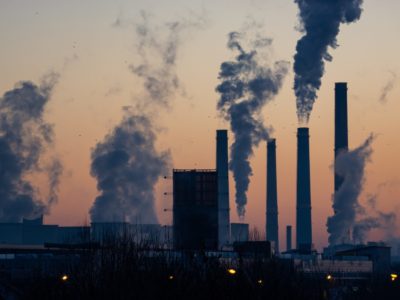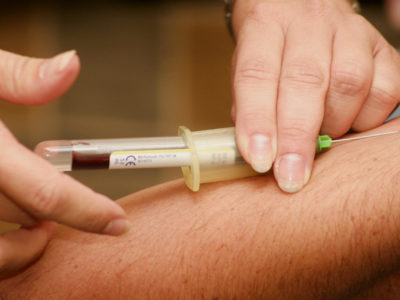That between the two Koreas is a war that has been fought for more than fifty years, although the three-year conflict between the US-led coalition under the United Nations flag and the North Communist regime led by Kim Il-Sung, supported by China and the Soviet Union, ended in the far 1953. The war did not end with a peace treaty, but with an armistice, which did not lead to the cessation of hostilities but merely confirmed the division of the Peninsula with the creation of a Demilitarized Zone (DMZ) along the thirty-eighth parallel. Still, US and South Korean forces, with the United Nations band on their arm, monitor the border a few dozen meters from Pyongyang’s guards.
Tensions between the two countries are always perceived, only the intensity of the clashes changes, most of which are caused by North Korea.
The armed Arm of the Kims
The leaders who succeeded in the North Korean government were Kim Il-Sung, founder of the regime after liberation from Japan, from 1945 to 1994, Kim Jong-Il from 1994 to 2010, and, from 2011 Kim Jong -Un., President currently in office, in a dynastic succession that sees power to pass from father to son.
The Sŏngun philosophy, which can be translated as “First of all the army”, was set up in 1994 by Kim Il-Sung, based on the principle that all resources must be allocated to the Armed Forces and puts the Army at the summit of the State both in terms of domestic affairs and foreign policy.
Chosŏn inmin’gun or the People’s Army of North Korea represents the terrestrial component of the Communist-era armed forces. Western sources report that the Armed Forces can count on about five million conscripts, men and women, to which the reserve forces and some paramilitary organizations must be added, which can be activated in the event of conflict, that provide for internal security. North Korea also has about three thousand tanks and twenty thousand cannons of various sizes of Soviet or Chinese construction, as well as individual and detachment weapons. The one of Korea is considered to be one of the largest armies in the world.
The naval component, or Joseon-inmingun Haegun, of sixty thousand men, employs about seventy submarines of different types as well as a hundred frigates and patrol boats.
Finally, the Korean Air Force’s, Chosŏn Inmin Kun Kongun, currently has a total of one hundred and ten thousand airmen with more than a thousand planes between hunting interceptors, bomber hunting, reconnaissance, transports, trainers, helicopters and drones able to carry out all the missions traditionally entrusted to the air weapon. Most of the aircraft are of Soviet or Chinese construction, with the exception of some US lightweight conveyor helicopters received by the Pyongyang regime in the 1980s, illegally, by the company that distributed such aircraft on behalf of the manufacturer. The way the regime came in possession of a Western transport aircraft used by the Pyongyang Air Force is unknown.
The Nuclear North Korean beginning Initiative
In 1956, North Korea asked the Soviet Union, its ally, to start a collaborative effort to develop the nuclear program. Moscow agreed on condition that it was energy for peaceful purposes and the same bond was placed by China. After signing the agreement, scientists and training technicians were sent. In response to what was considered a threat, the United States replied by detaching in South Korea nuclear-equipped missiles.
The first North Korean nuclear energy research center was built in 1962 at Yongbyon, 90 kilometers from the capital. In 1979 a second reactor was started, for the first time without Soviet collaboration and in 1985 a third-party construction was started. In the same year, North Korea signed the Nuclear Non-Proliferation Treaty (NPT) without, however, ratifying the IAEA guidelines, the United Nations Agency for the Promotion of the Peaceful Use of Nuclear Energy. In 1993, during an inspection, the agency’s engineers highlighted the lack of required security requirements. The same year, Korea announced its withdrawal from the NPT.

North Korea’s nuclear tests
The North Korean nuclear war program dates back to the 1980s when uranium production and processing centers were being built and car tests were carried out at the same time.
To try to limit the race to North Korea nuclear tests, the United States on October 21, 1994, made it possible to reach an agreement with Pyongyang. In exchange for the freezing of plutonium production, it was possible to establish economic cooperation between the two countries, as well as to ensure the supply of fuel and the construction of two power plants. The agreement, accepted by the regime, was suspended in 2003 in response to continued Pyongyang violations.
Sanctions were imposed by the United Nations since 2006 following the nuclear test carried out at Punggye-ri’s site, dug into a mountain in the north of the country. Subsequently, four more tests were carried out in 2009, 2013 and two in 2016. In order to understand what type of weapon was used, the US used a plane equipped with special instruments to analyze radioactive particles discharged into the air. These missions, thanks also to the contribution of South Korean intelligence, made it possible to discover that the last two tests were using hydrogen weapons, confirming the enormous steps taken by the regime in the development of its deterrent.
Nuclear missiles for Pyongyang
To the nuclear tests have followed, in tandem, the launch of ballistic missiles built to convey the heads. North Korean missile development started between 1976 and 1981, when Soviet construction vectors were used. National studies and research led to the design and construction of the nation’s first nationally rocket-driven, Rodon, which was successfully tested in 1993. Since the late 1990s, missile production was launched for space research, and on August 31, 1998 it was launched the first vector, a Paektusan-1, for satellite orbiting the Kwangmyonsong-1 satellite. The rocket did not reach the orbit as expected, but flew over Japan, obliging the Japanese government to revisit the agreements signed with the US in 1994. Western analysts agreed that this would be a test for the creation of long-range ballistic missiles.
Over the years, several launches were tested, some with positive results while others have proven to be failing. Everyone, however, was characterized by a north-east trajectory towards the Sea of Japan, a circumstance that prompted the protests of Tokyo ever more concerned about Pyongyang’s military development.
North Korea, a real threat?
At the same time as the development of ground-based missiles, with the test carried out in 2013, the project for the construction of a nuclear submarine missile force is emerging and, to this threat, it is added the ability to miniaturize the heads so that they can be transported by Long-range ballistic missiles.
Missile and nuclear tests carried out over the past two years have sparked a crisis that has involved Washington since the Obama administration and continues to this day. Donald Trump has announced that he wants to resolve the Korean question by involving Russia, increasingly worried about the outcome of the current stalemate and China, even though this strategy is complicated by the recent fracture between those two countries and Japan.
The conditions set by the United States are simple and clear: if Pyongyang continues its tests (missile and nuclear), the US military will respond militarily in confirmation of President’s words is witnessing a progressive deception in the area of men and women as well as, since April, the sending of a powerful fleet, including three aircraft carriers stationed south of Korea. Such a concentration of Naval Forces is considered a rare event by experts
South Korea, Moon’s tense hand
In an attempt to contain Pyongyang’s threat to South Korea, one of the main objectives of the regime ever, a US ballistic missile battery (called THAAD) was positioned to intercept and destroy North-launched vectors. The deployment of this defense system, however, has caused many protests and divided South Korean public opinion.
The new President of the Republic, Moon Jaen-In, has decided to withdraw the US system. Moon in fact, is trying to impose a new approach to resolving the crisis through a dialogue with Pyongyang, also in view of China’s fears that sees THAAD as a threat to its country. If Seoul had not opted for the withdrawal, there would have been economic repercussions, as a spokesman for the Chinese government said.
Just after the decision of the Seoul government, Pyongyang launched a last-generation intermediate ray carrier, in addition to cruise missiles, from the Wonsan base on the eastern coast of the country. The latter became stunned, after a 200-kilometer flight, at the point where 24 hours earlier the US fleet was engaged in an exercise with the Japanese and South Korean forces. The will of the regime to build ballistic missiles equipped with a nuclear warhead capable of hitting US ground is becoming reality, as admitted by Deputy Admiral James Syring of the American Missile Defense Agency during a press conference.
The Beijing option
As the provocations increase and the military option gets more credit, the leaders of the nations involved in the crisis keep all diplomatic channels open. Trump considers the Chinese government as the only ally of the regime, able to communicate with North Korea. It should be noted that the crisis has allowed Washington to come closer to Beijing as evidenced by the visit of Chinese President Xi Jinping to the United States in April this year.
China is open to dialogue, but is also worried that destabilizing Kim Jong-Un’s regime could lead to star and strip expansion in a dreadful scenario that sees the reunited Korean Peninsula pro-Western and, owing to further sanctions and economic restrictions, a mass migration of North Koreans to China.
A new Libya?
Traduzione a cura di Lucia Loddo






